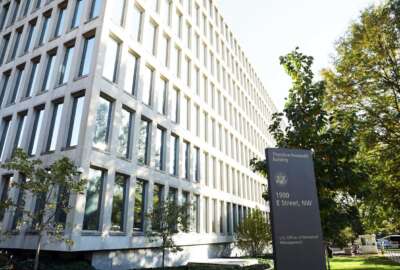
OPM launches new online collection of agency bargaining agreements, per Trump workforce EOs
An online database of nearly 800 agency collective bargaining agreements is now live on the Office of Personnel Management's website. The creation of a common, ...
Best listening experience is on Chrome, Firefox or Safari. Subscribe to Federal Drive’s daily audio interviews on Apple Podcasts or PodcastOne.
The Office of Personnel Management on Thursday launched a new online database of collective bargaining agreements from agencies across government.
The creation and launch of the new collective bargaining agreement database, which Federal News Network previewed earlier this week, fulfills a requirement of one of the president’s May 2018 workforce executive orders.
The president’s EO on collective bargaining had given agencies a deadline to submit all current collective bargaining agreements and new arbitration awards to OPM. That organization was then responsible for prescribing a format for agencies to submit these agreements and then make them all publicly available online.
The new collective bargaining agreement database lives on OPM.gov.
It’s a tool specifically for agency labor relations specialists, who, moving forward, will use the system to directly submit CBAs to OPM for public view. But OPM said the database also serves as a tool for the public.
Related Stories
As of the launch, the database has 774 collective bargaining agreements, a total that reflects the number of CBAs OPM has received from agencies at this point.
All of the agreements are readable, so members of the public can search individual documents for specific terms, the OPM official said. But the search function on the CBA database allows agencies and the public to look for a word or phase within all available agreements.
A search of the phrase “performance plan,” for example, generates results of 333 collective bargaining agreements where the term is referenced in specific documents.
“This database is about transparency in government,” OPM Director Dale Cabaniss said in a statement. “OPM is committed to implementing President Trump’s workforce reforms so the American people can have a more effective and efficient government.”
The database allows users to search for collective bargaining agreements by agency and sub-agency. The public can, for example, see all CBAs that are active at the Defense Department, and then narrow their search to all agreements at the Army.
Each CBA listing shows the end date for the agreement, the region where the bargaining unit is located and the union involved. Database users can also search and sort agreements by location and union.
All collective bargaining agreements are downloadable.
Authorized agency labor relations specialists will receive instructions to register and then log into the new database.
OPM on Thursday issued guidance to agencies explaining how they should use the new collective bargaining agreement database. It’s also hosting a call with agency labor relations directors to demonstrate the new system, the OPM official said.
Once labor relations specialists are registered, they can submit new or updated collective bargaining agreements to OPM through the new system. Previously, agencies emailed their documents and went back and forth with OPM to ensure the right information was collected, the official said.
OPM’s labor relations policy office worked with a web development team on the agency’s Office of the Chief Information Officer to create the collective bargaining agreement database.
“After working together to define the requirements for the database, the program office worked with the OPM CIO web development team using an agile software development methodology,” Anthony Marucci, an agency spokesman, said. “This allowed the program office to provide critiques and feedback on each aspect of the system as it was developed. This approach allowed flexibility to make necessary adjustments and improvements. The end product is an intuitive and user-friendly experience for the American taxpayer.”
OPM will continue to collect feedback from agencies as they use and grow familiar with the new database.
Unlike other key features of the president’s three workforce executive orders that had been locked up court battles for more than a year, efforts to create a publicly accessible record of all agency collective bargaining agreements had been ongoing since the EOs were signed back May 2018.
Nine key provisions of the workforce executive orders had been enjoined for more than a year, following an August 2018 decision from a federal district court. The injunction on the EOs expired after the U.S. Court of Appeals ruled in favor of the Trump administration and vacated the district court’s decision earlier this summer.
Once the injunction formally lifted in October, OPM and the White House asked agencies to revisit current collective bargaining agreements and begin implementing all pieces of the executive orders.
Collective bargaining agreements whose terms have expired or rolled over must be reopened, even if agencies or employee unions haven’t opted to revisit the CBA, OPM said in November.
Federal employee unions, however, have said they’ve already experienced direct impacts of the president’s workforce executive orders, even before the injunction on them had lifted.
Copyright © 2024 Federal News Network. All rights reserved. This website is not intended for users located within the European Economic Area.
Nicole Ogrysko is a reporter for Federal News Network focusing on the federal workforce and federal pay and benefits.
Follow @nogryskoWFED






